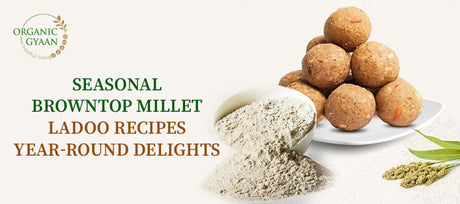
Seasonal Brown Top Millet Ladoo Recipes: Year-Round Delights
By Organic Gyaan
Brown Top Millet Ladoo is a nutritious and delicious snack that combines the goodness of brown top millet with the richness of traditional Indian sweets.
Read more



Organic Gyaan's Jau Atta (Barley Flour) – A Healthy & Nutritious Choice
At Organic Gyaan, we bring you premium-quality jau atta (Barley Flour), a wholesome and versatile ingredient packed with essential nutrients.
Made from finely ground barley grains, jau atta (Barley Flour) has a rich, nutty flavor and a slightly denser texture compared to wheat flour. It is a fantastic addition to your diet, offering a healthier alternative to refined flours.
If you're looking for high-quality barley flour online, Organic Gyaan ensures you get the freshest, chemical-free, and naturally processed flour for your everyday cooking needs.
Rich in Fiber: High fiber content in jau atta (Barley Flour) promotes good digestion and helps regulate blood sugar levels.
Gluten-Free Alternative: Suitable for those with gluten intolerance or celiac disease, making it a great replacement for wheat flour.
Heart Health Support: The soluble fiber in barley flour may help lower cholesterol levels and reduce the risk of heart disease.
Packed with Antioxidants: Helps protect the body from free radicals and supports overall well-being.
Slow Energy Release: Jau atta (Barley Flour) provides complex carbohydrates, ensuring a steady release of energy without sudden sugar spikes.
Boosts Immunity: Being rich in selenium, barley flour supports immune system function and may help protect against certain diseases.
Baking and Cooking: Use jau atta (Barley Flour) to make crackers, pancakes, and homemade pasta.
Flatbreads and Rotis: A perfect substitute for wheat flour to prepare soft and nutritious rotis or parathas.
Soups and Stews: Thickens soups and stews while adding a mild nutty taste.
Healthy Breakfasts: Add barley flour to porridge, muffins, or smoothies for an energy-packed start to the day.
At Organic Gyaan, we offer naturally processed, chemical-free jau atta (Barley Flour), ensuring maximum freshness and nutrition.
Buying barley flour online from us guarantees a pure and unpolished product, loaded with amazing barley flour benefits to support your health.
Make the switch to jau atta (Barley Flour) today and enjoy a healthier, more nutritious diet. Order now and add the goodness of barley flour to your meals!
Certainly, the process you're describing involves soaking the millets, sun-drying them, and then stone-grinding them to create activated flour. This method is commonly used in traditional food preparation and has its own set of benefits.
Here's a more detailed step-by-step guide based on the process you've mentioned:
Ingredients and Equipment:
Instructions:
1. Soaking:
2. Sun Drying:
3. Stone Grinding:
Once the millets are thoroughly dried, use a stone grinder or any suitable grinding equipment to grind them into flour. The stone grinding method is often preferred for its ability to retain the nutritional integrity of the grains.
4. Sieve if Necessary:
After grinding, you may choose to sieve the flour to achieve a finer texture, removing any larger particles.
Activated millet flour obtained through this process is likely to have a distinct flavor and nutritional profile due to the traditional methods used. It can be used in a variety of recipes, such as bread, pancakes, or other baked goods. Always follow food safety guidelines and use the activated millet flour as specified in your recipes.
1. What is barley flour?
Barley flour is made from finely ground whole barley grains. It’s packed with fiber, protein, and essential nutrients.
2. Does barley flour contain gluten?
No, barley flour is not gluten-free and is unsuitable for those with gluten intolerance or celiac disease.
3. How can I use barley flour in cooking?
You can use it for baking bread, pancakes, cookies, or as a thickener in soups and sauces. For better results, mix it with other flours.
4. What are the health benefits of barley flour?
It is rich in fiber for better digestion, helps manage blood sugar levels, and supports heart health with beta-glucans.
5. How should I store barley flour?
Keep it in an airtight container in a cool, dry place. Refrigeration or freezing extends its shelf life.
6. Can barley flour be substituted for wheat flour?
Yes, you can replace 25-50% of wheat flour in recipes, but the texture may vary due to its lower gluten content.
7. Is barley flour suitable for diabetics?
Barley flour has a low glycemic index, making it a good option for managing blood sugar, but consult a doctor before use.
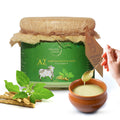 Best Quality Guaranteed
Best Quality Guaranteed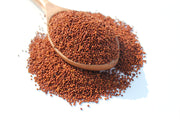 Free from Chemical & Pesticides | NO GMO
Free from Chemical & Pesticides | NO GMO
 Best Quality Guaranteed
Best Quality Guaranteed Free from Chemical & Pesticides | NO GMO
Free from Chemical & Pesticides | NO GMO
 Best Quality Guaranteed
Best Quality Guaranteed Free from Chemical & Pesticides | NO GMO
Free from Chemical & Pesticides | NO GMO
 Best Quality Guaranteed
Best Quality Guaranteed Free from Chemical & Pesticides | NO GMO
Free from Chemical & Pesticides | NO GMO
 Best Quality Guaranteed
Best Quality Guaranteed Free from Chemical & Pesticides | NO GMO
Free from Chemical & Pesticides | NO GMO
 Best Quality Guaranteed
Best Quality Guaranteed Free from Chemical & Pesticides | NO GMO
Free from Chemical & Pesticides | NO GMO
 Best Quality Guaranteed
Best Quality Guaranteed Free from Chemical & Pesticides | NO GMO
Free from Chemical & Pesticides | NO GMO
 Best Quality Guaranteed
Best Quality Guaranteed Free from Chemical & Pesticides | NO GMO
Free from Chemical & Pesticides | NO GMO
 Best Quality Guaranteed
Best Quality Guaranteed Free from Chemical & Pesticides | NO GMO
Free from Chemical & Pesticides | NO GMO
 Best Quality Guaranteed
Best Quality Guaranteed Free from Chemical & Pesticides | NO GMO
Free from Chemical & Pesticides | NO GMO
 Best Quality Guaranteed
Best Quality Guaranteed Free from Chemical & Pesticides | NO GMO
Free from Chemical & Pesticides | NO GMO
 Best Quality Guaranteed
Best Quality Guaranteed Free from Chemical & Pesticides | NO GMO
Free from Chemical & Pesticides | NO GMO
 Best Quality Guaranteed
Best Quality Guaranteed Free from Chemical & Pesticides | NO GMO
Free from Chemical & Pesticides | NO GMO
 Best Quality Guaranteed
Best Quality Guaranteed Free from Chemical & Pesticides | NO GMO
Free from Chemical & Pesticides | NO GMO
 Best Quality Guaranteed
Best Quality Guaranteed Free from Chemical & Pesticides | NO GMO
Free from Chemical & Pesticides | NO GMO
 Best Quality Guaranteed
Best Quality Guaranteed Free from Chemical & Pesticides | NO GMO
Free from Chemical & Pesticides | NO GMO
 Best Quality Guaranteed
Best Quality Guaranteed Free from Chemical & Pesticides | NO GMO
Free from Chemical & Pesticides | NO GMO
 Best Quality Guaranteed
Best Quality Guaranteed Free from Chemical & Pesticides | NO GMO
Free from Chemical & Pesticides | NO GMO
 Best Quality Guaranteed
Best Quality Guaranteed Free from Chemical & Pesticides | NO GMO
Free from Chemical & Pesticides | NO GMO
 Best Quality Guaranteed
Best Quality Guaranteed Free from Chemical & Pesticides | NO GMO
Free from Chemical & Pesticides | NO GMO

By Organic Gyaan
Brown Top Millet Ladoo is a nutritious and delicious snack that combines the goodness of brown top millet with the richness of traditional Indian sweets.
Read more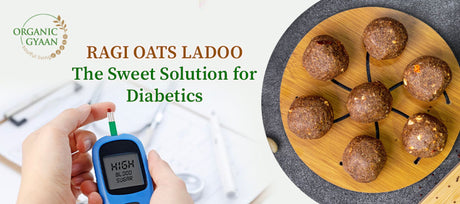
By Organic Gyaan
The Ragi Oats Ladoo, a harmonious blend of these two ingredients, emerges as a perfect snack for people looking to manage their blood sugar levels effectively.
Read more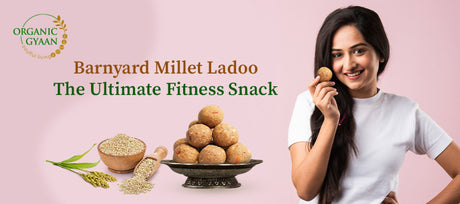
By Organic Gyaan
Did you know a tiny, ancient grain could be a game-changer in your workout routine? Say hello to Barnyard Millet, a super nutritious grain that's making a big comeback in...
Read more
By Organic Gyaan
In the realm of weight management and healthy eating, it's easy to get lost in a sea of trendy diets and superfoods.
Read more
By Organic Gyaan
More and more people are choosing gluten-free diets for better health. Among many gluten-free options, Kodo millet is very nutritious and good for health.
Read more
By Organic Gyaan
Diving into the world of millets introduces you to a realm of culinary possibilities that combine health, nutrition, and taste in every bite.
Read more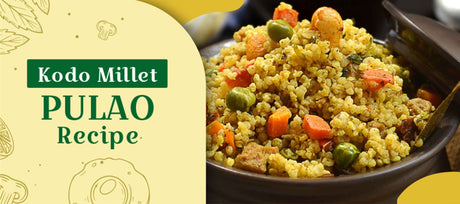
By Organic Gyaan
Kodo millet might be new to you, but it's been eaten for a very long time in some parts of the world, especially in India.
Read more
By Organic Gyaan
In a world where indulgence and health rarely meet, the Chocolate Banana Parfait with Chia Pudding and Homemade Almond Nutella emerges as a delightful exception.
Read moreWe currently ship to the United States, Canada, Australia and the UK. To enquire about shipping to a different destination, please contact us.
Standard shipping normally takes 3-5 days. Next day shipping is available on all domestic orders (for an additional charge). International shipping times depend on the products and destination (estimated at checkout).
Items must be returned within 30 days after receiving your order. Items must be returned in the same condition in which they were received, be unworn/unused, have any tags still attached, and include all the original packaging.
Refunds are processed within 7 days from when we receive the item(s).





Organic Gyaan's Jau Atta (Barley Flour) – A Healthy & Nutritious Choice
At Organic Gyaan, we bring you premium-quality jau atta (Barley Flour), a wholesome and versatile ingredient packed with essential nutrients.
Made from finely ground barley grains, jau atta (Barley Flour) has a rich, nutty flavor and a slightly denser texture compared to wheat flour. It is a fantastic addition to your diet, offering a healthier alternative to refined flours.
If you're looking for high-quality barley flour online, Organic Gyaan ensures you get the freshest, chemical-free, and naturally processed flour for your everyday cooking needs.
Rich in Fiber: High fiber content in jau atta (Barley Flour) promotes good digestion and helps regulate blood sugar levels.
Gluten-Free Alternative: Suitable for those with gluten intolerance or celiac disease, making it a great replacement for wheat flour.
Heart Health Support: The soluble fiber in barley flour may help lower cholesterol levels and reduce the risk of heart disease.
Packed with Antioxidants: Helps protect the body from free radicals and supports overall well-being.
Slow Energy Release: Jau atta (Barley Flour) provides complex carbohydrates, ensuring a steady release of energy without sudden sugar spikes.
Boosts Immunity: Being rich in selenium, barley flour supports immune system function and may help protect against certain diseases.
Baking and Cooking: Use jau atta (Barley Flour) to make crackers, pancakes, and homemade pasta.
Flatbreads and Rotis: A perfect substitute for wheat flour to prepare soft and nutritious rotis or parathas.
Soups and Stews: Thickens soups and stews while adding a mild nutty taste.
Healthy Breakfasts: Add barley flour to porridge, muffins, or smoothies for an energy-packed start to the day.
At Organic Gyaan, we offer naturally processed, chemical-free jau atta (Barley Flour), ensuring maximum freshness and nutrition.
Buying barley flour online from us guarantees a pure and unpolished product, loaded with amazing barley flour benefits to support your health.
Make the switch to jau atta (Barley Flour) today and enjoy a healthier, more nutritious diet. Order now and add the goodness of barley flour to your meals!
Certainly, the process you're describing involves soaking the millets, sun-drying them, and then stone-grinding them to create activated flour. This method is commonly used in traditional food preparation and has its own set of benefits.
Here's a more detailed step-by-step guide based on the process you've mentioned:
Ingredients and Equipment:
Instructions:
1. Soaking:
2. Sun Drying:
3. Stone Grinding:
Once the millets are thoroughly dried, use a stone grinder or any suitable grinding equipment to grind them into flour. The stone grinding method is often preferred for its ability to retain the nutritional integrity of the grains.
4. Sieve if Necessary:
After grinding, you may choose to sieve the flour to achieve a finer texture, removing any larger particles.
Activated millet flour obtained through this process is likely to have a distinct flavor and nutritional profile due to the traditional methods used. It can be used in a variety of recipes, such as bread, pancakes, or other baked goods. Always follow food safety guidelines and use the activated millet flour as specified in your recipes.
1. What is barley flour?
Barley flour is made from finely ground whole barley grains. It’s packed with fiber, protein, and essential nutrients.
2. Does barley flour contain gluten?
No, barley flour is not gluten-free and is unsuitable for those with gluten intolerance or celiac disease.
3. How can I use barley flour in cooking?
You can use it for baking bread, pancakes, cookies, or as a thickener in soups and sauces. For better results, mix it with other flours.
4. What are the health benefits of barley flour?
It is rich in fiber for better digestion, helps manage blood sugar levels, and supports heart health with beta-glucans.
5. How should I store barley flour?
Keep it in an airtight container in a cool, dry place. Refrigeration or freezing extends its shelf life.
6. Can barley flour be substituted for wheat flour?
Yes, you can replace 25-50% of wheat flour in recipes, but the texture may vary due to its lower gluten content.
7. Is barley flour suitable for diabetics?
Barley flour has a low glycemic index, making it a good option for managing blood sugar, but consult a doctor before use.
Weight
HIGH NUTRITIONAL VALUE
Organic foods preserve far more vitamins & minerals
NO CHEMICALS & PESTICIDES
We don’t use artificial fertilisers or additives in our food
CERTIFIED ORGANIC SOURCES
Our products quality is verified by top certification bodies
PRESERVES THE ENVIRONMENT
Sustainable farming ensures soil conversation & reduced air pollution